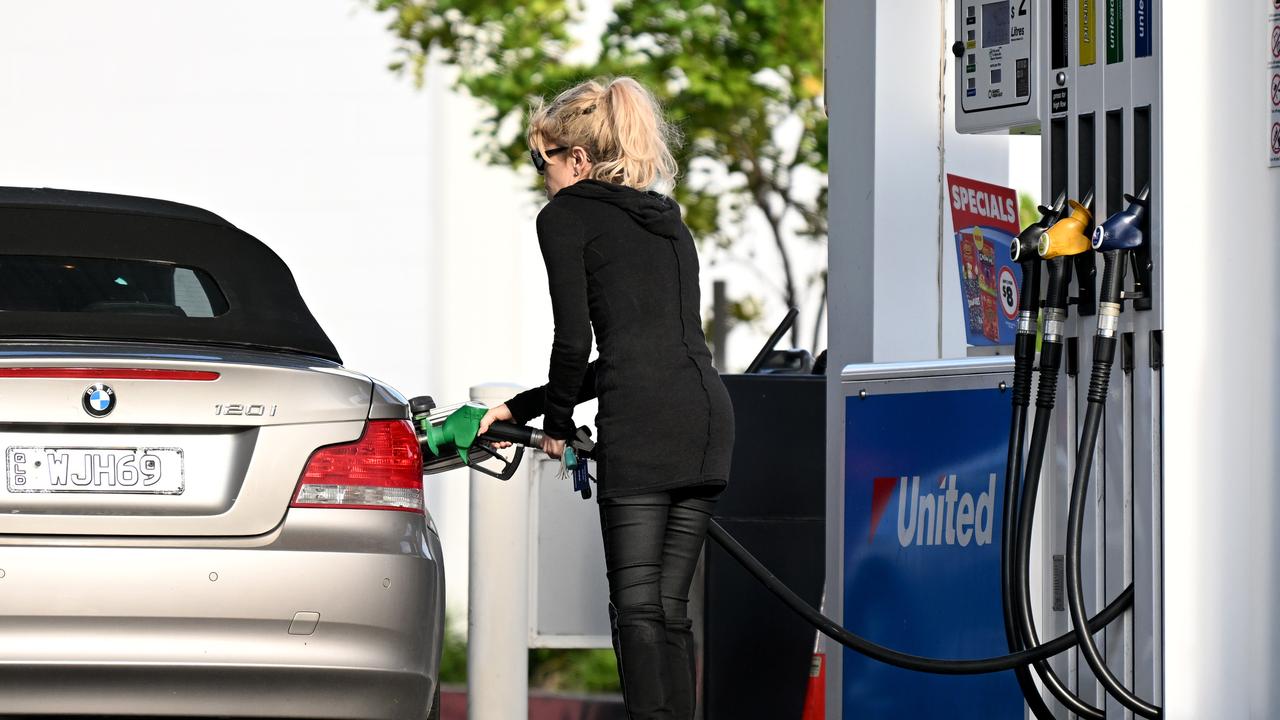Australians spending nearly 75 per cent more on fuel each month
New data has revealed the shocking amount Aussies are now spending on petrol each month as the fuel crunch continues.
Australians are spending nearly three-quarters more on petrol each month than they were less than a year ago, confronting new data from Compare the Market has found.
In June, the average monthly spend on petrol in Australia was $192.63, an increase of $82.05 (74.19 per cent) from September 2021.
That substantial increase was reflected in NSW and Victoria, which respectively experienced 74.75 and 74.05 per cent rises in their average monthly fuel spend during that same period.
Compare the Market spokesperson Chris Ford said these prices had come at a worrying time for drivers, with cost-of-living expenses increasing across the board.

“It’s been a really difficult three to four months even with the halving of the fuel excise for motorists right across Australia,” he said.
“It’s significant for households already feeling the pinch in their budget, with energy, grocery and home loan prices going up.”
Paying $2 a litre for fuel has become the norm for motorists across Australia, with petrol prices sitting at around the mark in Brisbane, Sydney and Perth this week.
But Mr Ford had some worrying news for Melbourne commuters about their average petrol price.
“Melbourne by far and away is the most expensive capital city in the country at the moment, with an average price of around $2.33 a litre. That’s 30c more than in Sydney and Brisbane, that’s a big discrepancy,” he said.
But these vast variations in price are not only present between different states and regions but also in the same city.
Mr Ford said “there’s always going to be discrepancy” in individual markets, with price differences of 40c a litre found in the same capital city.
“There is great frustration out there with motorists not knowing how it works and seeing prices rise and then fall,” he said.
“We know that the discrepancy can be as much as 40c a litre, that could be $20 if you’re filling up a 50-litre tank.”

These heavy prices have made Australians become more strategic and considered with their driving habits, with more than 60 per cent now shopping around for cheaper fuel.
Mr Ford said it was the “smart move”, as a couple of minutes of planning or extra driving can lead to big savings.
“The best way to save is to use the comparison apps to find cheaper fuel, that far exceeds any other discount program,” he said.
“There are other methods people have adopted. It could be looking for greater discounts and partnership programs … as well as changing their actual driving and purchasing habits.
“Those habits that have changed will be good habits long term even if we do have a levelling out in the oil price.
“It could be to the tune of $1000 (in savings) over the course of the year. It might look insignificant at the station, but it really is worth your time.”

Mr Ford said there could be some “good news” for Australians on the horizon even with the fuel excise cut ending in September.
“Oil prices have been rising since mid-May due to increased demand from China now that their latest round of Covid lockdowns have eased. The EU bloc also recently confirmed a ban on Russian oil by sea, which is about two-thirds of Russian exports,” Mr Ford said.
“But we have seen a trend where the oil price has dropped about 16 per cent in the month and 8 per cent this week alone.
“If the demand drops as global finances crunch and it (oil) just becomes too expensive, that will potentially also lead to a drop in oil prices.
“We could start seeing production meet demand too, so maybe these choppy waters of the last few months are starting to steady out.”



